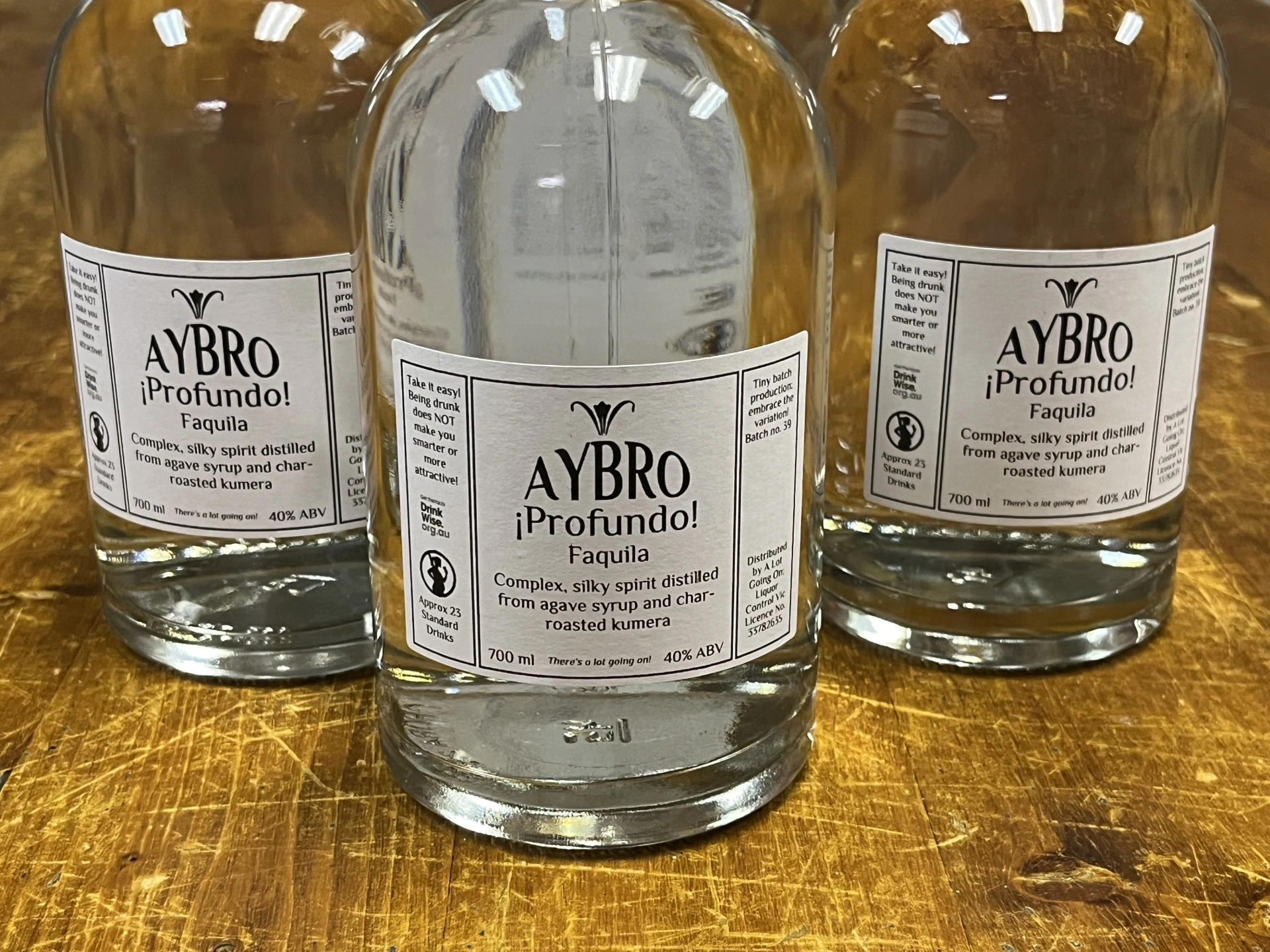
The Process
This is a brief overview of the distillation process. There are many moving parts and different techniques that can or need to be employed, for which we won't go into detail, but this overview will give you a high-level picture.
Alcohol - from what?
Alcohol and carbon dioxide are by-products of fermentation - when yeast eats sugar, in simple terms. So how do we get from that to delicious drinks? The summary below will give you an idea of the process. Others may have different views.
Ferment
We start with sugar, in one form or another. We can use processed, crystalline sugar (e.g. table sugar or glucose), sugar syrup (e.g. molasses or agave) or we can extract it from grain, fruit or vegetables. Processed sugar is better for consistency of flavour and alcohol yield whereas extracted sugar can have better flavour and mouth feel. We use a combination of these three types in different ratios, depending on the product. The sugar is added to water to achieve a certain Specific Gravity (SG) then yeast is ‘pitched’ into it and it is left to ferment, for about a week at managed temperature, until the sugar is all consumed and the ferment is ‘dry’.
Wash
The ferment is allowed to settle and the clarified ‘wash’ is racked off into a clean vessel. The wash is basically beer of between 4-10% alcohol by volume (ABV) and can be slightly effervescent. It will taste sweet and sour, a bit like a combination of cider and kombucha. This is the beer the ancients would have been drinking ten thousand years ago.
Distill
Distillation is where the excess water is removed and the alcohol is concentrated. The concentration can be between 90-95% ABV for reflux distillation and 65-85% for pot distillation.
Reflux distillation can be completed in a single pass, and produce very high quality spirit. With reflux the same alcohol is distilled over and over again until only a very clean vapour is condensed. It’s very efficient but many of the ‘beardy-wierdies’ disdain it because - I don’t know. It’s a bit like wankers who refuse to drive a car with automatic transmission because it’s ‘not real driving’. Because reflux distillation is so effective it produces a very clean, neutrally flavoured spirit so it’s ideal for ‘vodka’ or the clean base for other spirits like gin.
Pot distillation uses two passes; the first is to reduce the volume of the wash and the second is to refine the spirit, the spirit run. In a pot still the alcohol is distilled once before it’s condensed. This process is very good for retaining flavour in the spirit so whisky, gin and rum tend to be produced by pot distillation. Our gin starts with a reflux distilled clear spirit which has botanicals added and is then run through a pot still.
Once the spirits are finished they’re proofed down to 40% ABV for bottling and consumption.
Heads or tails?
There are four, distinct phases of a pot distillation spirit run; foreshots, heads, hearts and tails.
Foreshots - these are the most volatile chemicals and there’s a high concentration of awful things like methanol, which will tend to cause lots of harm. These come off the still first (hence the name) and are collected and discarded.
Heads - this is where there’s still a lot of volatility; the spirit may still be a little harmful and it’s definitely distasteful with its acetone/nail polish remover characters. Heads are separated but can be collected and redistilled.
Hearts - is where the home is. Hearts are the desirable spirits and will have a sweetish aroma and any botanicals will smell fresh.
Tails - occur at the end of the run and are characterised by a ‘wet cardboard’ aroma and stale flavours. Tails are generally not that harmful but are distasteful. Some interesting flavours might be present though so some care will be taken with their collection. Tails generally start to appear at about 20% ABV; we start to separate them from here and collect down to about 5% ABV in 5% steps, just in case something interesting is there. Tails will generally be discarded.
Reflux distillation is far more straightforward and generally no intervention is necessary (our still automatically takes foreshots off), but we still separate the first spirit offtakes to make sure there are no volatiles ‘smearing’ into the spirit. These offtakes are redistilled.